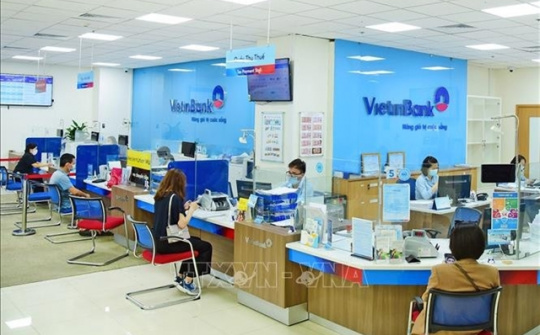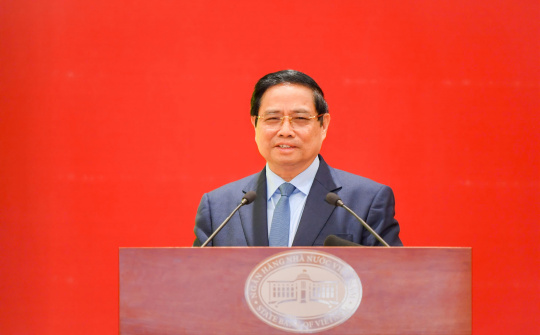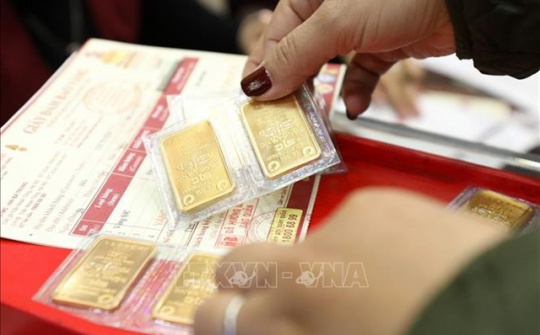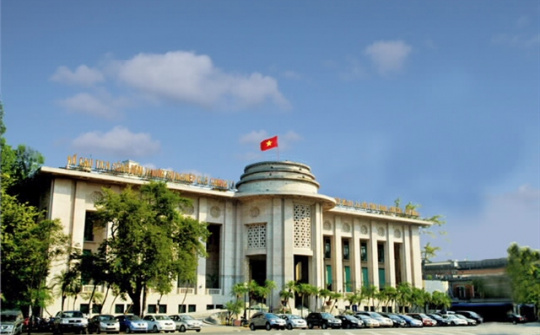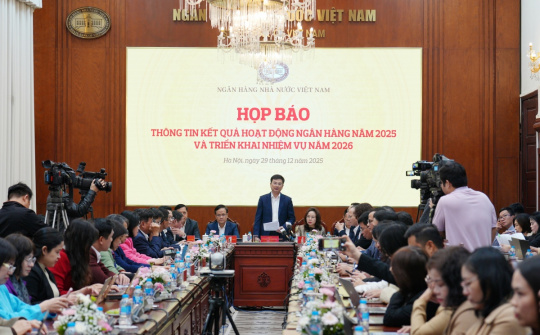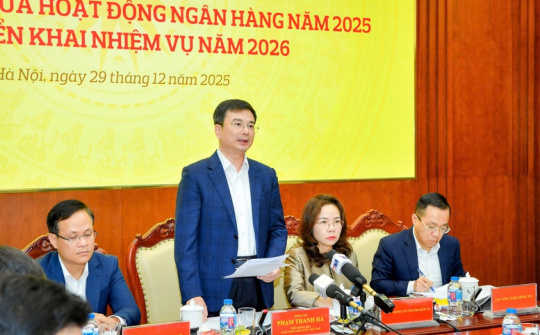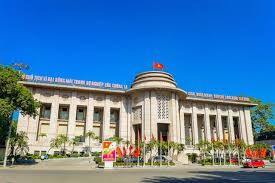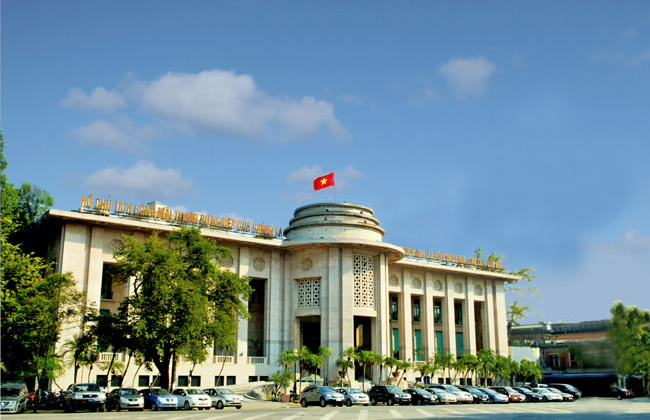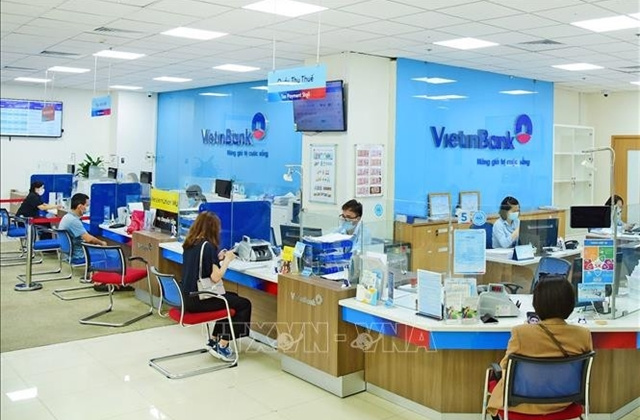Although the value of many Asian currencies has recovered so far this year, the Vietnamese đồng has still depreciated by about 2.7-2.8 per cent against the US dollar.
Phạm Chí Quang, Director of the State Bank of Vietnam (SBV)’s Monetary Policy Department, talks about the cause of the đồng devaluation and forecasts the đồng in the second half of 2025.

Phạm Chí Quang, Director of the State Bank of Vietnam (SBV)’s Monetary Policy Department
What were the causes of the đồng depreciation in the first half of 2025?
The US dollar index (DXY) decreased by more than 10 per cent at times in the first half of this year. In that context, many currencies in the Asian region have recovered significantly. However, the đồng still recorded a depreciation of about 2.7-2.8 per cent against the dollar.
There are many reasons for the đồng depreciation.
First, to maintain the strength of a currency, it is necessary to maintain the attractiveness of the currency. Meanwhile, the interest rate is the decisive factor determining the attractiveness of the currency because it directly reflects the value of the currency.
However, in order to implement the direction of the Government and the Prime Minister on reducing interest rates to support economic growth, the SBV has continuously adjusted its policy interest rate down since 2022, which has helped reduce the lending interest rate and maintain it at a low level.
Currently, the average lending interest rate is only more than 6 per cent per year. In the first 6 months of this year alone, the lending interest rate decreased by 0.64 per cent compared to the end of 2024.
However, the interest rate reduction has also required a trade-off, including the foreign exchange rate.
The SBV has consistently managed its monetary policy to ensure abundant liquidity, allowing commercial banks to access capital from the SBV at low costs. Thanks to the SBV’s policy, the VNĐ interest rate remains at a low level, facilitating support for production and business.
However, when the VNĐ interest rate is low, it has pushed the interest rate difference between USD and VNĐ to a negative level. When VNĐ is no longer attractive and USD is more attractive, organisations and people will switch to holding USD.
Although our balance of payments has remained stable, and we have still had a good surplus, the cash flow has been depleted rapidly due to the continuous withdrawal of foreign indirect investment (FII) capital from the stock market since 2024.
Meanwhile, the foreign direct investment enterprises have also increased the transfer of their profits back to their countries, creating significant pressure on USD supply and demand, thereby affecting the USD/VNĐ exchange rate.
What are the forecasts for the USD/VNĐ exchange rate in the second half of 2025?
An international factor that could have a strong impact on the exchange rate in the future is the trade policy of President Donald Trump’s administration.
Such tax policies will significantly impact the supply chain and investment capital flows, and thereby indirectly affect domestic exchange rates and interest rates, especially since Việt Nam is a highly open economy, with an import-export turnover-to-GDP ratio often exceeding 200 per cent.
Additionally, the USD/VNĐ exchange rate will continue to be influenced by the interest rate policy of the US Federal Reserve (Fed). Although the Fed has repeatedly affirmed that it will cut interest rates twice in 2025, it has been continuously delayed. The interest rate cut has been continuously postponed from March to June, then to July and now to September.
Besides, many major economies such as Europe and Japan have entered a monetary loose cycle thanks to cooling inflation, but inflation in the US is still complicated. The Fed currently maintains a ‘data-driven’ stance, meaning it only acts when economic data allows.
Therefore, the Fed’s interest rate policy and the trade orientation of the Donald Trump administration will directly affect the exchange rate and interest rate in Việt Nam.
What will the SBV's monetary and foreign exchange management policies be in the second half of 2025?
Although our country's economy has recovered to a certain extent, the data released by the Ministry of Finance shows that the number of businesses withdrawing from the market is very large, so the sustainable development of GDP also needs to be carefully considered because it will impact the SBV’s monetary, interest rate and exchange rate policies.
To implement the Government's direction on economic growth and to gain a GDP growth of more than 8 per cent in 2025, bank credit growth by the end of June 2025 surged by 9.9 per cent compared to the end of 2024. Therefore, the SBV will still be cautious about credit growth.
In the last six months of the year, if inflation is controlled at a level below 4.5 per cent set by the National Assembly, while commercial banks maintain good liquidity and bad debt is under control, the SBV will consider a credit growth expansion for qualified banks.
In the long-term strategy, the SBV will continue to implement the Government's direction on maintaining a low interest rate to ensure liquidity and stability for economic activities. The policy’s goal is to create an attractive lending environment with an aim to encourage production and business, and support growth.
Although low interest rates may affect the profits of some organisations, this needs to be viewed in the overall context of the economy. Maintaining reasonable and competitive interest rates will help the economy overcome difficult times and create momentum for sustainable development.
The SBV will regularly update market developments to propose appropriate solutions, flexibly manage exchange rates according to market supply and demand, and ensure that the legitimate foreign currency needs of businesses and people are fully met.


